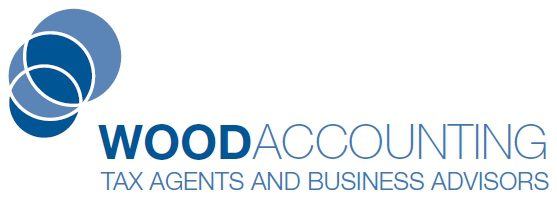Rental Property Repairs vs. Capital Costs: What Property Owners Need to Know
A Beginner’s Guide to Property Investment from a Taxation Perspective
Investing in property can be a lucrative way to build wealth, but it’s essential to understand the tax implications to maximize your returns. This guide will cover the full life cycle of property investment taxation for new investors
How to start a business in Australia
Starting a business in Australia has never been easier. While it can be a bit daunting, with a some help from an Accountant, it can also be incredibly rewarding. If you’re thinking about starting your own business, there some critical steps you need to cover off first.

Step 1: Do your research
Before you do anything else, it’s important to do your research and make sure that starting or buying a business is right for you. There are a lot of factors to consider, such as your skills, experience, and finances. You should also research the industry you’re interested in and the competition you’ll be facing.
We advise doing some research around your proposed business name, web address, social media tags etc to ensure you can run with the name that you desire.
Due Diligence – This is a specific process that you use when buying a business. We provide this service to clients to give them an independent analysis of the business that they are looking to buying. We fact check the information given by the selling party and give our opinion on the price that you should pay.
Book a meeting with us to discuss the business you are looking to buy.
Step 2: Develop a Business Plan
Remember the old military adage – The 5 Ps: Proper Planning Prevents Poor Performance
A Business Plan is a roadmap for your business. You can’t just wing it and hope for the best. Your Business Plan should include information about:
- your product or service; why will people or businesses buy from you?
- market analysis; who are your competitors and what is the future of your market?
- marketing strategy; how will you get the word out?
- SWOT analysis – Strengths | Weaknesses | Opportunities | Threats;
- finance – how are you going to fund the startup or purchase of this business?
- Team – what people and skills will you require now and into the future?
- cash flow forecast – banks love these to be detailed. Use your Accountant for this;
- milestones – what will the business look like in 1,2 5 10 years?
Most banks and investors want to see a sound Business Plan before they are willing to risk their funds with your business.
Xero have a couple of Business Plan templates that you can download and use.
Cash Flow forecasts are a great way to test your ideas. What sales do you need to break even? What sales do you need to pay yourself a decent wage? Speak to us to develop a cash flow forecast for your idea.
Business plans also allow you to confirm the viability of your business case, and improve your ideas, on paper before risking your cash. Running your plan by some trusted advisors and experienced business people can also highly improve your likelihood of success.
You may do the work on your Business Plan and realise that it is not currently viable. This is great as you have only invested a bit of your time. You may stop here and revisit this or keep adjusting your plan.
If your plan is looking good, and you have reviewed it with your Accountant and trusted advisors, it is time to look at putting your plans into action.
Step 3: Meet with your Accountant
Book a meeting with us. We deal with small businesses every day and have a wealth of experience with businesses that have been through the full lifecycle your business will go through. We can fill any gaps in your knowledge and potentially save you costly mistakes.
We can quote up a package to assist you with setting up your business structure, Accounting software and an ongoing plan to ensure you meet all of your tax and accounting obligations.
Setting your business up correctly from the beginning ensures that you have the highest chance of success as you build up your business.
Step 4: Choose a business structure
The next step is to choose a business structure. There are three main types of business structures in Australia. You need to consider the full life cycle of your business to choose what is right for you.
Cost, complexity of management and tax implications are all important considerations. Take some time to speak with us to get expert advice up front. This will save you any regrets in the future as you can make a fully informed decision.
Consideration must also be given to current and proposed ATO laws. Particularly those regarding Personal Services Income and Professional Profits. Speak to us about this.
The common choices for business structure are:
- Sole trader: This is the simplest type of business structure. As a sole trader, the business is attached to you. You will be personally liable for the debts, liabilities and legal issues of your business.
- Partnership: This is structure involving two or more people. Partners are jointly and severally liable for the debts, liabilities and legal issues of the business. This is rarely a good idea. Generally only used by spouses.
- Company: These are the most common entity used by businesses. Companies are a separate legal entity from its owners. You would own shares in the company. You also need to select one or more people to be directors. Companies are limited liability entities, which means that the owners may not be personally liable for the debts and liabilities of the business – as long as the directors have not breached the corporations act. A company can sue and be sued. Companies can also retain profit and pay 25% company tax in most circumstances. Retained profit is paid out later via dividends.
- Trusts – These are somewhat common for small business. You also need to form a Corporate Trustee (Company) to be trustee of the trust. Trusts must distribute ALL profits each year. There are certain advantages, and disadvantages to using a trust. The 2 main types of trust are:
- Discretionary Trust – Directors of the trustee company have discretion as to how profit is distributed. This can be quite flexible.
- Unit Trust – much like a company, owners buy units instead of shares. Distributions to unit holders is based on how many units are held as a % of the total units issued.
Step 5: Form your entity
Once you’ve chosen a business structure, you can work with your Accountant and legal advisor to form the entity. It is very important to get the paperwork correct at this step. We have seen and helped to correct many errors where people have tried to DIY this step.
If you choose a company, you will need to first get your MyGovID, then a Director ID, to be able to form a company.
Step 6: Get your Registrations
OK. Now you need to get comfortable with some acronyms. ACN, ABN, BAS, GST, PAYGW, ASIC, STP, ABR, not to mention the other things like ABRS, Director ID and MyGovID.
This is where you really need expert advice from your Wood Accounting to ensure you are setup correctly from day one.
Here is a quick run down of the most common small business acronyms everyone needs to become familiar with:
- ABN (Australian Business Number) is a unique 11 digit identifier for your business. You need an ABN to operate a business in Australia.
- GST (Good and Services Tax) is 10% added to most goods and services. You must register for GST if your turnover (income) will be more than $75,000 per year. GST is a user pays tax in that the end users end up paying the tax. So consumers that spend the most pay the most GST.
- ACN (Australian Company Number) – a unique 9 digit number issued to all companies in Australia. Fun fact – your ABN is your ACN with 2 extra numbers added to the FRONT of the number.
- ASIC (Australian Securities and Investment Commission) – The Australian regulator for companies. ASIC is responsible for promoting a fair, transparent and efficient financial system for all.
- PAYGW (Pay as You Go Withholding) – This is a registration you must have in order to pay wages and with hold tax.
- STP (Single Touch Payroll) – This is a new system that requires all businesses to submit each pay run to ATO in real time. Allowing ATO to have visibility on PAYGW and Super that is due for employees.
- BAS (Business Activity Statement) – The is a monthly/quarterly/annual statement businesses lodge to report their GST, PAYGW, PAYG, FTC and other taxes payable for the period. Businesses use software such as Xero to capture this information and summarise it into the BAS.
Step 7: Finalise your Intellectual and Digital Property
Get your digital identity sorted ASAP. You will have checked all this out in your business plan but now you need to register:
- Website domain names,
- email systems,
- social media tags – these are critically important digital assets
- your logo and marketing collateral
- Trademark – consider trademarking your logo, colours, tag lines etc. This will prevent others from using these to steal your business. Be aware that your business or company name DO NOT prevent others using them.
Step 8: Get your Systems Right
What systems are you going to use to run your business efficiently, so that you have a competitive advantage over your competition?
Each of your business functions will likely have a system. Most systems these days are digital cloud solutions.
Your Accounting system is the centre of any business. This provides the functions of payroll, quoting, invoicing, accounts payable, accounts receivable, bank reconciliations, reporting, BAS etc. Common solutions here are Xero and MYOB. Our preference is Xero due to it’s ease of use for the customer.
Secondary systems surround the core accounting system. These include, Job management systems, HR systems, POS systems, inventory systems, online store systems and many more.
Step 9: Open a business bank account
It’s important to have a separate bank account for your business. This will help you keep your personal and business finances separate. We always recommend a 2 account system.
- 1 main bank account – for every day trading
- 2 tax and super account – we have clients move their tax obligations to this account so that they have the $$ available when their tax obligations are due.
We do not recommend a certain bank but we do ask clients to use a bank that is able to connect bank feeds to Xero. Without this bookkeeping and BAS become a really painful experience.
Step 10: Get the right insurance
There are a number of different types of insurance that you may need for your business, such as business interruption insurance, public liability insurance, cyber insurance and workers’ compensation insurance. Worker’s Comp is compulsory for all businesses that have employees. That includes those who only employ the owners.
If you are unsure, speak to a business insurance broker for tailored advice.
Step 11: Get the necessary permits and licenses
Depending on the type of business you’re starting, you may need to obtain certain permits and licenses. For example, if you’re selling food, you’ll need a food handling permit. Tradies may need a new permit to add their new entity details to current licences.
Step 12: Market your business
Once you have your business up and running, you need to let people know about it. There are a number of different ways to market your business, such as online marketing, print advertising, and public relations.
Step 13: Have Fun!
Starting a business is a lot of work, but it can be very rewarding. By following these steps, you can increase your chances of success. Enjoy the process of building your own successful business.
Step 14: Think about your Exit Strategy
Building a business is like building a house. At some point in the future you may not fit with the business any more and need to move on. Again the 5 Ps come into play. Proper Planning Prevents Poor Performance. Think about and have a rough plan for some common scenarios:
- Retirement
- Sale after a planned time period
- Illness or death – make sure you have personal wills and estate planning in place.
- Shareholder/Unitholder agreements – if you are in business with other owners and directors get a legal agreement in place to clarify how changes in to ownership will play out.
As Accountants we can help plan these scenarios and refer you to lawyers who are experienced in drafting practical shareholder agreements. Book a chat to run through these steps.
Additional tips for starting a business in Australia
- Network: Networking with other entrepreneurs can help you learn from their experiences and get advice and support.
- Challenges: Starting a business is a challenging but rewarding experience. Speak to us at Wood Accounting for advice and support if you experience any challenges along the way.
ATO Small Business Skills and Training Boost
The Australian Taxation Office (ATO) recognizes the importance of continuous learning and has introduced the Small Business Skills and Training Boost program
Temporary Full Expensing Ends 30 June 2023
Temporary Full Expensing finishes June 2023. Replaced by Immediate Asset Write-Off with more restrictions.









